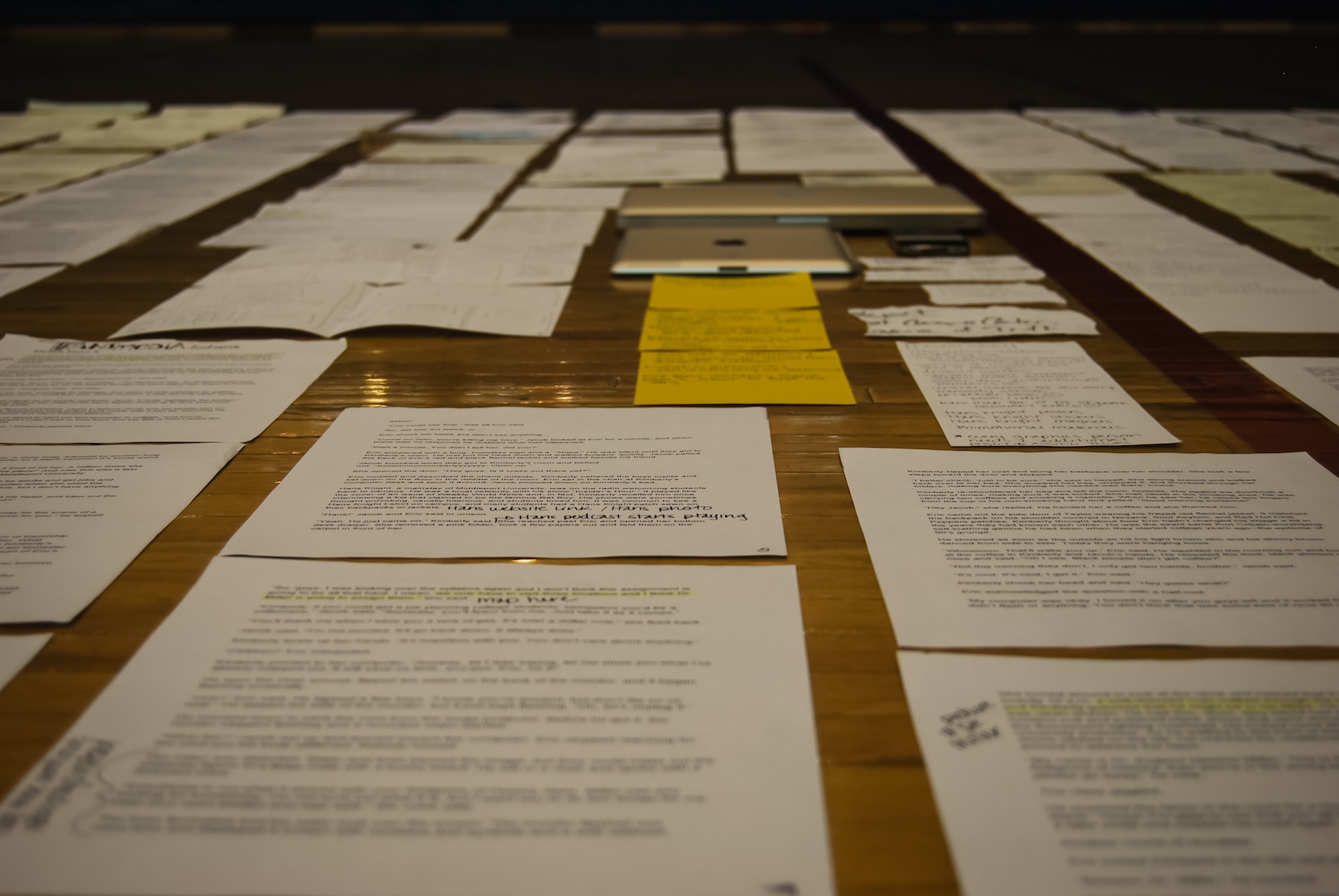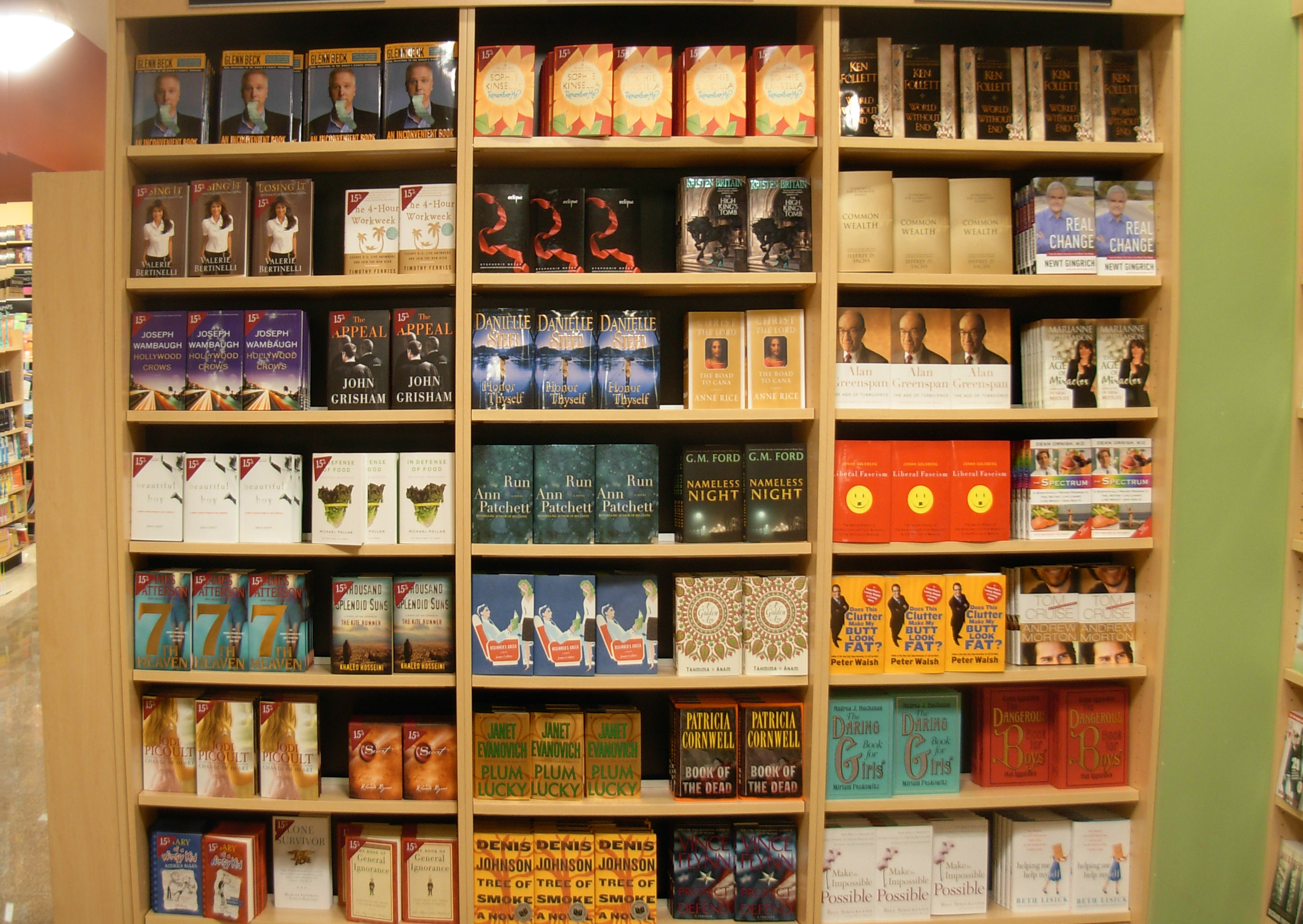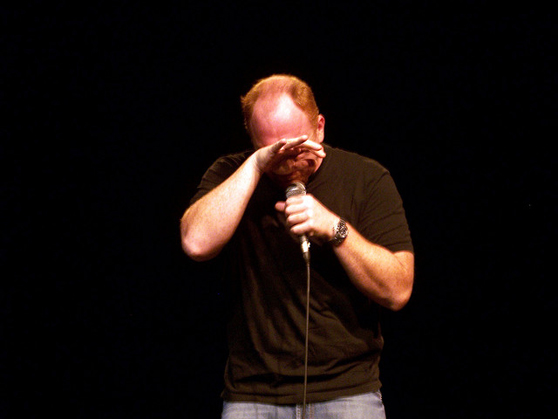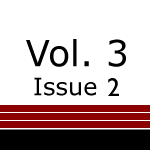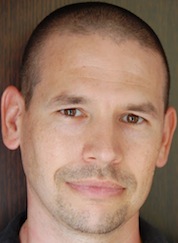“That Light-Bulb Feeling”: An Interview with Clay Spinuzzi
Clay Spinuzzi, an accomplished scholar and teacher in rhetoric and technical communication, shares his thoughts on building scholarship, developing effective research methodologies and methods, and the role of writing beyond academe in a time of rapid technological change.
Since receiving his Ph.D. from Iowa State University in 1999, Clay Spinuzzi has published more than 20 refereed articles in our field’s major journals, over 25 refereed chapters and proceedings papers, and two foundational books—Tracing Genres through Organizations in 2003, and Network in 2008. Spinuzzi has also served as editor for important special issues of Technical Communication Quarterly in 2007 and the Journal of Business and Technical Communication in 2009. His contributions have had a lasting impact on the field, particularly through his investigations of the relationships between rhetoric and broader sociocultural theories.
Spinuzzi is also a public intellectual. He has maintained an influential blog since 2003, and he routinely works with industry professionals, both in the U.S. and abroad. His recent work effectively bridges the academic and public aspects of his career. For example, in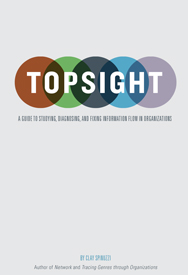 his most recent book, Topsight, Spinuzzi explores the “big picture” view of organizational work, something he has been studying and teaching—to both students in academe and industry professionals—for the last 15 years. Through Topsight, Spinuzzi offers practical approaches to studying rhetorical work within contemporary organizations, in terms accessible to general audiences. And through his in-progress book, All Edge, Spinuzzi again writes for a broader public audience—in the tradition of Smart Mobs, Starfish and the Spider, and Future Shock1—exploring the role of writing and communicative genres in mediating the technological and social changes imbricated in contemporary networked environments.
his most recent book, Topsight, Spinuzzi explores the “big picture” view of organizational work, something he has been studying and teaching—to both students in academe and industry professionals—for the last 15 years. Through Topsight, Spinuzzi offers practical approaches to studying rhetorical work within contemporary organizations, in terms accessible to general audiences. And through his in-progress book, All Edge, Spinuzzi again writes for a broader public audience—in the tradition of Smart Mobs, Starfish and the Spider, and Future Shock1—exploring the role of writing and communicative genres in mediating the technological and social changes imbricated in contemporary networked environments.
Two key themes cut across Spinuzzi’s work, from his 1999 paper on documentation (“Grappling”) to 2013’s Topsight: the notion of genre as both a theoretical and material construct, and the methods and methodologies we use to explore genres and rhetorical work in situ.2 Methodology is a persistent theoretical and practical concern that has driven Spinuzzi’s scholarship in diverse directions; he has explored and extended rhetorical genre studies, adapted cultural-historical activity theory, and deftly considered the implications of actor-network theory for writing research.3 Spinuzzi’s work is thus situated within several overlapping research traditions, while remaining firmly grounded in rhetoric and technical communication. Spinuzzi’s approach has been strongly shaped by the work of David Russell—his mentor and dissertation director—from whom he first learned of activity theory and its utility in the study of writing (see, for example, Russell’s “Activity,” “Rethinking,” and “Uses”). Indeed, sociocultural and associative approaches to the study of writing and rhetorical contexts have strongly informed Spinuzzi’s work (through important scholarship by Bazerman, Berkenkotter and Huckin, Haas, Mirel, Freedman and Smart, Syverson, Winsor, Engeström, and many others). And Spinuzzi’s relationship to these approaches has been mutually constitutive; his scholarship has significantly informed contemporary research on writing from sociocultural and associative approaches. More recently, both Russell (“Uses”) and Spinuzzi (“Secret Sauce”) have framed the emerging synthesis between rhetorical genre studies and activity theory as writing, activity, and genre research (WAGR).
Spinuzzi’s explorations of genre resulted in a new fieldwork methodology—genre tracing—an approach for studying complex genre assemblages in everyday practice (Tracing). Genre tracing extended traditions of sociocultural research to account for the ways that genres stabilize activity, change as a response to activity, and emerge as new or hybrid forms of knowledge and practice. Spinuzzi’s work, therefore, has contributed to scholarly understandings of genre while simultaneously theorizing novel methodological approaches that have complemented and extended existing frameworks. As Anis Bawarshi and Mary Jo Reiff have argued, “Genre analysis, located between textually oriented and sociocultural methods, enables a pluralistic methodology, integrating multiple methods and data sources in the study of genre” (109). This ethos can be seen in Spinuzzi’s most influential work, where he has described genre as a form of social memory that embodies “a galaxy of assumptions, strategies, and ideological orientations” that have meaningful, material affects on individuals and organizations (Tracing 43). The actual work of studying those assumptions, strategies, and ideological orientations through genres of practice is thus a key methodological concern.
I met with Spinuzzi at the 2012 ACM Special Interest Group on Design of Communication conference, and the exigence for our conversation stems from our mutual interest in the nexus of genre, methodology, and fieldwork practice. We began by discussing one of Spinuzzi’s most underrated articles, a 2004 SIGDOC paper that explores this nexus across four influential approaches to genre (“Four Ways”). He argues that a researcher’s approach to genre strongly frames and directs the phenomena under scrutiny, yoking genre and methodology through fieldwork practice. In the interview that follows, Spinuzzi shares his thoughts on genre, contemporary research methodologies, future public and disciplinary concerns, and the “light-bulb feelings” that occur when our fieldwork practices help us make sense of everyday rhetorical contexts.4
Brian: I’m a big fan of your 2004 SIGDOC piece, and I want to use that as a touchstone to ask: why does genre matter?
Clay: I’m really glad you liked the piece—it’s one of my favorites. That one has become one of my big building blocks. In 2004 I was trying to figure out for myself—why am I using genre ecologies rather than some other frameworks that have been out there forever? That was me thinking out loud and it really helped me identify what was going to go on next.
When I think of genre, I’m trying to get at something that’s both social and material. Genre is really a nice way to meld those two. We can actually see how these instantiations change, we can watch how people interact with them, we can ask people how they interpret them, and it’s not something that’s just ethereal—it’s not just something that’s in people’s heads, it’s something that you can actually materially see change—it’s kind of where the social and the material meet. I think that’s what kept me on it for so long.
Brian: Are there things that we use in the field that are just in the head—that aren’t materially represented the way genres are?
Clay: When I was going through grad school in the mid 90s, people had just basically played out this notion of schema [which] is very similar to what we’re calling genre, but it’s something that you would apply to just about any sort of action. And it was essentially like a script that people would follow. Schema always seemed like sort of an idea of genre that was ungrounded from artifacts.
Brian: We were talking about methods earlier today, and you said “I love methodology!” Why has this been such a consistent focus during your career?
Clay: I think part of it is that people are going to call me on my bullshit, and I think people should have this healthy worry that they’ll construct this elaborate argument and then somebody’s going to be able to just puncture it by saying “wait a minute, here’s something you missed.” So one of the things that I always have to do as I start putting together a methodology or analyzing data is play this believing/doubting game.
You spend a little time believing your nascent claim and figuring out where that takes you, and then you have to flip and say, “ok, I’m going to doubt this,” because if you don’t go through that exercise somebody else is going to. And then what you have is a weak argument supported by anecdotes. I don’t want that.
I think the other thing about being really interested in methodology is that we have to be able to show our work—this is how we got from A to B—and if we can’t do that, we’re just sort of building these castles in the air. I want this work to circulate, not just among like-minded people, but also people who have very, very different assumptions.
One of the things that I really have liked doing is looking at how research methods change as they go across different boundaries. I saw a paper today5 where somebody was doing this in terms of think-aloud protocols, and I really liked it because she was able to say, “here are the assumptions in experimental psychology, here are the assumptions in user-centered design, here are statements people make about it, and even though we’re using the same term it’s a completely different method, because those assumptions have completely changed.”
I think it’s critical to be able to see those differences and be able to say, “here is the nature of the claims that people are making.” I think so often we’ll pick up—and especially in technical writing and rhetoric, where we borrow so much from other fields and disciplines—we pick these things up sort of superficially, we apply them to our own work, and we don’t even realize there’s this methodological shift, and it really ungrounds things.
Brian: Do you ever worry about overdetermining your methods? About running counter to the spirit of reflexive qualitative methodologies, for example?
Clay: When I approach putting together a methodology, I don’t expect any specific method or data collection technique to carry the load by itself. It just can’t.
So it’s all about triangulation. I always like to get at least three different perspectives on any sort of data point. I keep imagining this stuff as like strands in a net. You have to have them all pull together. So it can get even a little loose with one of these methods as long as you’ve got the other two to back them up. As long as you know what you’re doing, as long as you understand [where] these methods are coming from and you don’t put too much burden on [any] one of them…
Brian: Right. I think Packer (2011) does a really good job of problematizing qualitative coding, of saying “hey, some of this is arbitrary.” How do we just intuit these things? Does it really come from the data or does it come from our analytic framework? Do we need to be careful of that?
Clay: Oh yeah. I think that’s a danger that I’m really worried about during some of my analyses. I think that’s partially why I become so obsessive about bringing these different points to bear on the same thing, because I don’t always trust what I’m going to find. Now, a counterexample:
When I went into this telecommunications company that I wrote about in Network, my goal was to take this analytical framework that I put together in my dissertation—in my first book—and it was going to be very simple and straightforward. But as I went through, I kept finding things that it just wouldn’t explain.
I was so excited when I realized that was happening because—thank goodness—I am allowing the data to push back, and I am recognizing that this analysis is not going to work. So I think you have to watch out for spots like that and be excited when they happen. I like to think of this stuff as like solving a mystery…
Brian: This is reminding me of “How Not to Write Fiction”! Who Killed Rex?
Clay: Right. I framed it as sort of a mystery, and it was something where I was able to [present] this nice, tightly bounded case that I used to trace all these different areas [of research]. When you want to solve a mystery, you don’t decide who’s guilty first and then gather the evidence to convict. You have to look at the evidence first, and move inductively from there to the possibilities. I think that’s really the fun of qualitative research.
Brian: How will research methods need to change and evolve in this age of big data, ubiquitous computing, and social software?
Clay: I’m really mostly focused on the latter two: ubiquitous computing—everybody has a supercomputer in their pocket now, and social media—everybody essentially has a printing press.
As researchers, we’re used to thinking of ourselves as hav[ing] to protect our participants, we have to make sure that we’re fair to them—we should probably do member checks, because it’s a nice thing to do, sort of noblesse oblige, and I think we have to start thinking in terms of well, no, they’re actually partners who have a voice. Sometimes they’re going to have a voice that’s bigger than ours, and we better take seriously this idea of member checks, of making sure that we’re representing them fairly.
So that’s something that I woke up to a few years ago because I was interviewing coworking spaces and these guys have enormous sets of Twitter followers. I thought, “I’ve got to be able to find ways to confirm that I’m seeing what they’re seeing,” so I worked at several different ways of trust-building and eventually I was able to make statements [to which] they would sometimes say “I wish that weren’t true, but it is true; ok, you can go with it.” I think that’s going to be really important especially for the next generation of researchers, to realize that our IRB process is mired in that printing press era, and we’re not in that era anymore.
Brian: Toward those ends, what do you think our field can add to public awareness and understanding of writing?
Clay: People write everyday but they don’t think about it. Eva-Maria Jakobs at [the] University of Aachen likes to say that “writing is an important but unloved task,” especially in technical communication and workplaces. I think that’s really true.
At the same time we’re doing so much more of it—we’ve transitioned essentially to a knowledge society where we’re pushing around bits and ideas rather than plows, and people are writing all the time—they’re tweeting, they’re posting on Facebook, they’re writing post-it notes, but they don’t think of this stuff as writing.
In the book I’ve been working on (All Edge), I’ll be taking some of the case studies that I’ve been publishing recently about people in subcontractor networks, in coworking spaces, people working on search engine optimization, and reanalyzing what they do in terms of how they’re circulating knowledge.
There’s been a lot of work trying to tie organizational structures to communication, but [without] the rhetoric perspective. So I’m going to try and bring that perspective on the one hand, but on the other hand I’m going to try and write this really clearly for a popular audience.
Brian: Why is that important to you, to write that kind of book?
Clay: I blame David Russell. I was chatting with him in 2008, after Network had just come out, and he said “ok, now you need to write an airport book.”
I thought, well, maybe he’s right. I really would like to have this come out to a larger audience. I don’t think it’s healthy for us to just keep it in academe. And, going back to how much I love methods and methodology, I love these stories that we tell about what’s going on in these case studies. I’ve always liked the stuff from Dorothy Winsor, [and] more recently Jason Swarts. It’s just so well told, and it gives you really different perspectives on what’s going on, and I like that sort of light-bulb feeling. I think other people can have that light-bulb feeling too.
Brian: Finally, what are some of the biggest challenges facing our field in the coming years?
Clay: I think in terms of education, people need very different things from writers in the workplace. I think you’ve seen that at this conference—a lot of stuff we’re talking about is not identifiably writing, and it’s certainly not the sort of stuff that was happening in tech comm when I got into it.
We’re no longer writing [documentation] to make the [software] boxes heavy—we’re doing things like managing user communities, or trying to figure out SEO strategy, and so things have become a lot more complex, they’ve become a lot more internetworked, and I think we’re going to have to find ways to come to grips with that, to reconceptualize some of the things we’ve been long teaching. [Alvin] Toffler used to say that the academy was very slow in changing—faster than the law, but still very, very slow. And the change that we’re having to respond to is becoming very, very, very fast, because knowledge has become such a huge part of the economy. So, I worry that we’re going to end up teaching from last year’s playbook instead of this year’s playbook. And I’m not going to get any more specific than that, because I don’t really have any answers.
Endnotes
- These popular audience works all deal with the pace of technological and social change, and adaptation and response to said change. All three books explore such shifts in terms of work arrangements—from Toffler’s adhocracies to Brafman and Beckstrom’s discussion of Wikipedia—focusing in particular on new forms of technological mediation and networks.What these books lightly cover, however, is the role of writing and communicative genres in mediating such change. Spinuzzi is thus well positioned to address the significance of writing and genre relative to contemporary technological mediation. return
- See, for example: “Investigating the Technology-Work Relationship”; “Genre Ecologies”; “A Scandinavian Challenge”; “Toward Integrating our Research Scope”; “Modeling Genre Ecologies”; “Compound Mediation”; Tracing Genres; “Four Ways to Investigate Assemblages of Texts”; “The Methodology of Participatory Design”; “Chains and Ecologies”; “Who Killed Rex?”; Network; “Losing by Expanding.” return
- While Network and “Who Killed Rex” are excellent scholarly treatments of relationships between activity theory and actor-network theory, Spinuzzi has also written an accessible, thought-provoking series of blog posts exploring some of these key issues: “Symmetry as a Methodological Move.” return
- The original interview transcript has been edited for length and clarity. return
- The presentation was by Amy Gill and Blair Nonnecke of the University of Guelph: “Think Aloud: Effects and Validity.” return
Works Cited and Referenced
- Bawarshi, Anis, and Mary Jo Reiff. Genre: An Introduction to History, Theory, Research, and Pedagogy. West Lafyette, IN: Parlor Press. 2010. Print.
- Bazerman, Charles. “Discursively Structured Activities.” Mind, Culture, and Activity 4.4 (1997): 296–308. Web. 15 Oct. 2012.
- Berkenkotter, Carol, and Thomas N. Huckin. Genre Knowledge in Disciplinary Communication: Cognition/Culture/Power. Hillsdale, NJ: LEA, 1995. Print.
- Brafman, Ori, and Rod A. Beckstrom. The Starfish and the Spider: The Unstoppable Power of Leaderless Organizations. New York: Penguin, 2008. Print.
- Engeström, Yrjö. “Innovative Organizational Learning in Medical and Legal Settings.” Sociocultural Psychology: Theory and Practice of Doing and Knowing. Eds. Laura Martin, Katherine Nelson, and Ethel Tobach. Cambridge: Cambridge University Press, 1995. 326–356. Print.
- Freedman, Aviva, and Graham Smart. “Navigating the Current of Economic Policy: Written Genres and the Distribution of Cognitive Work at a Financial Institution.” Mind, Culture, and Activity 4.4 (1997): 238–255. Print.
- Gill, Amy, and Blair Nonnecke. “Think Aloud: Effects and Validity.” SIGDOC ’12: Proceedings of the 30th Annual Conference on Design of Communication. New York: ACM, 2012. 31–36. Web. 15 Oct. 2012.
- Haas, Christina. Writing Technology. Mahwah, NJ: LEA, 1996. Print.
- Mirel, Barbara. “‘Applied Constructivism’” for User Documentation.” Journal of Business and Technical Communication 12 (1998): 7–49. Print.
- Packer, Martin. The Science of Qualitative Research. Cambridge: Cambridge University Press, 2011. Print.
- Rheingold, Howard. Smart Mobs: The Next Social Revolution. Cambridge, MA: Basic Books, 2003. Print.
- Russell, David. “Activity Theory and its Implications for Writing Instruction.” Reconceiving Writing, Rethinking Writing Instruction. Ed. Joseph Petraglia. Mahwah, NJ: LEA, 1995. 51–76. Print.
- —. “Rethinking Genre in School and Society: An Activity Theory Analysis.” Written Communication 14.4 (1997): 504–554. Web. 15 Oct. 2012.
- —. “Uses of Activity Theory in Written Communication Research.” Learning and Expanding with Activity Theory. Eds. Annalisa Sannino, Harry Daniels, and Kris Gutiérrez. Cambridge: Cambridge University Press, 2009. 40–52. Print.
- Spinuzzi, Clay. “A Scandinavian Challenge, a U.S. Response: Methodological Assumptions in Scandinavian and U.S. Prototyping Approaches.” SIGDOC ’02: Proceedings of the 20th Annual Conference on Design of Communication. New York: ACM, 2002. 208–215. Web. 15 Oct. 2012.
- —. “Compound Mediation in Software Development: Using Genre Ecologies to Study Textual Artifacts.” Writing Selves/Writing Societies: Research from Activity Perspectives. Eds. Charles Bazerman and David Russell. Fort Collins, CO: WAC Clearinghouse, 2002. 97–124. Web. 15 Oct. 2012.
- —. “Four Ways to Investigate Assemblages of Texts: Genre sets, systems, repertoires, and ecologies.” SIGDOC ’04: Proceedings of the 22nd Annual Conference on Design of Communication. New York: ACM, 2004. 110–116. Web. 15 Oct. 2012.
- —. “Grappling with Distributed Usability: A Cultural-Historical Examination of Documentation Genres Over Four Decades.” SIGDOC ’99: Proceedings of the 17th Annual Conference on Design of Communication. New York: ACM, 1999. 16–21. Web. 15 Oct. 2012.
- —. “Guest Editor’s Introduction: Technical Communication in the Age of Distributed Work.” Technical Communication Quarterly 16.3 (2007): 265–277. Print.
- —. “How Not to Write Fiction.” Spinuzzi: A Blog about Rhetoric, Technology, Research, and Where We’re Headed Next. 9 Nov. 2009. Web. 15 Oct. 2012.
- —. “Investigating the Technology-Work Relationship: A Critical Comparison of Three Qualitative Field Methods.” IEEE PCS/SIGDOC 2000 Conference Proceedings. New York: ACM, 2000. 419–432. Web. 15 Oct. 2012.
- —. “Losing by Expanding: Or, Corralling the Runaway Object.” Journal of Business and Technical Communication 25.4 (2011): 449–486. Web. 15 Oct. 2012.
- —. “Modeling Genre Ecologies.” SIGDOC ’02: Proceedings of the 20th Annual Conference on Design of Communication. New York: ACM, 2002. 200–207. Web. 15 Oct. 2012.
- —. Network: Theorizing Knowledge Work in Telecommunications. New York: Cambridge University Press, 2008. Print.
- —. “Secret Sauce and Snake Oil: Writing Monthly Reports in a Highly Contingent Environment.” Written Communication 27.4 (2010): 363–409. Print.
- —. Spinuzzi: A Blog about Rhetoric, Technology, Research, and Where We’re Headed Next. 5 June 2003. Web. 15 Oct. 2012.
- —. “Starter Ecologies: Introduction to the Special Issue on Social Software.” Journal of Business and Technical Communication 23.3 (2009): 251–262. Web. 15 Oct. 2012.
- —. “The Methodology of Participatory Design.” Technical Communication 52.2 (2005): 163–174. Print.
- —. Topsight: A Guide to Studying, Diagnosing, and Fixing Information Flow in Organizations. Austin, TX: CreateSpace, 2013. Print.
- —. “Toward Integrating Our Research Scope: A Sociocultural Field Methodology.” Journal of Business and Technical Communication 16.1 (2002): 3–32. Web. 15 Oct. 2012.
- —. Tracing Genres through Organizations. Boston: MIT Press, 2003. Print.
- —. “Who Killed Rex? Tracing a Message through Three Kinds of Networks.” Communicative Practices in Workplaces and the Professions: Cultural Perspectives on the Regulation of Discourse and Organizations. Eds. Mark Zachry and Charlotte Thralls. Farmingdale, NY: Baywood Press, 2007. 45–66. Print.
- —. “Working Alone Together: Coworking as Emergent Collaborative Activity.” Journal of Business and Technical Communication 26.4 (2012): 399–441. Web. 15 Oct. 2012.
- Spinuzzi, Clay, William Hart-Davidson, and Mark Zachry. “Chains and Ecologies: Methodological Notes Toward a Communicative-Mediational Model of Technologically Mediated Writing.” SIGDOC ’06: Proceedings of the 24th Annual Conference on Design of Communication. New York: ACM, 2006. 43–50. Web. 15 Oct. 2012.
- Spinuzzi, Clay, and Mark Zachry. “Genre Ecologies: An Open-System Approach to Understanding and Constructing Documentation.” Journal of Computer Documentation 24.3 (2000): 169–181. Web. 15 Oct. 2012.
- Syverson, Margaret. The Wealth of Reality: An Ecology of Composition. Carbondale, IL: SIU Press, 1999. Print.
- Toffler, Alvin. Future Shock. New York: Bantam Books, 1984. Print.
- Winsor, Dorothy. Writing Like an Engineer: A Rhetorical Education. Mahwah, NJ: LEA, 1996. Print.

